Grading and Quality of Gemstones
Navigating the intricate realm of Grading and Quality of Gemstones reveals a striking truth: not all stones share the same stature. The grading process, coupled with the intrinsic quality of gemstones, directly shapes their value, brilliance, and allure. Notably, aspects like clarity, color, cut, and carat weight stand at the forefront of this evaluation. Through this guide, we’ll plunge into the standards and subtleties that set a treasured gem apart from the mundane, illuminating the essence of what elevates a stone to exceptional status.
The 4Cs for Diamonds: Cut, Color, Clarity, Carat.

In the realm of evaluating the Grading and Quality of Gemstones, particularly for diamonds, experts primarily lean on the Four Cs: Cut, Color, Clarity, and Carat weight. Significantly, each of these attributes crucially influences the diamond’s overall appeal and price.
Cut
In the dazzling world of gemstones, the cut stands as a vital factor that defines its brilliance and allure. More than just dictating the basic shape or outline, the cut dives deep into the craftsmanship and precision used to fashion the gemstone. Specifically, it considers the layout and ratios of facets, the strategic angles they hold, and the symmetry and equilibrium of the overall design. When artisans execute a cut with perfection, it heightens the gemstone’s capacity to harness light and internally refract it, leading to that desired shimmer and glow. On the flip side, even a gemstone with impeccable clarity or color can lose its charm with a subpar cut, often appearing lackluster. Within the foundational 4C’s, the cut holds an irreplaceable position, ensuring every gemstone showcases its unparalleled beauty to onlookers.
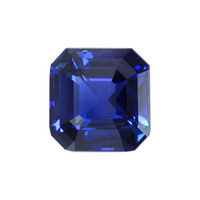
-padparadscha-sapphire-0.2700-cts-pa2762-1.jpg?d=200x200)
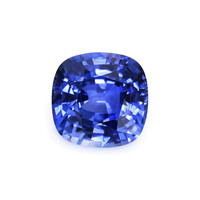
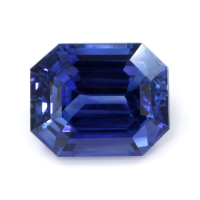
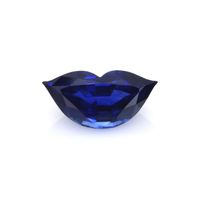
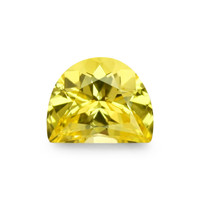
-heart-pink-tourmaline-7.2100-cts-k404-1.jpg?d=200x200)
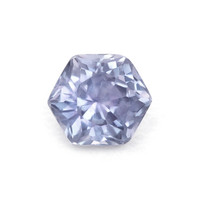
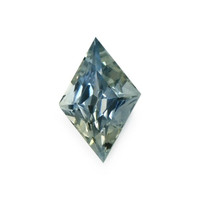
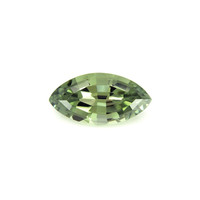
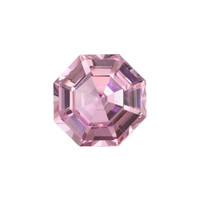
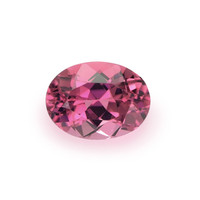
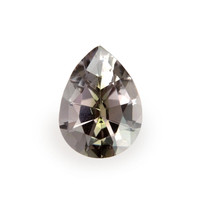
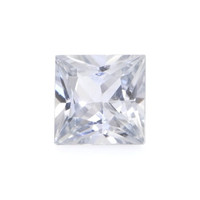
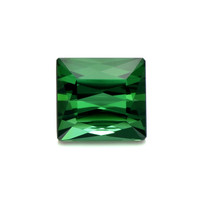
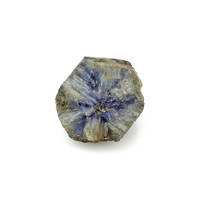
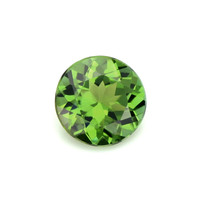
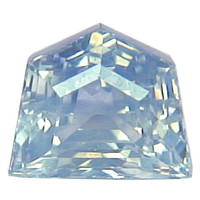
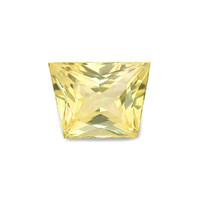
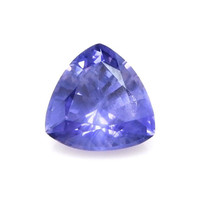
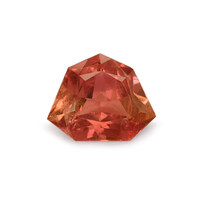
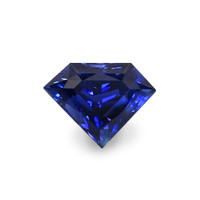
Color
In the intricate process of assessing a diamond’s quality and value, the renowned 4C’s – Cut, Color, Clarity, and Carat weight – become essential touchstones. Notably, each of these elements decisively influences the diamond’s overarching beauty and value. Among them, “Color” especially stands out, holding a unique prominence, especially in the realm of diamonds.
Color in the context of diamonds refers to the presence or absence of coloration in a diamond. Contrary to popular belief, a perfectly colorless diamond is rare and, therefore, more valuable. The Gemological Institute of America (GIA), a renowned authority in gem grading, uses a scale to rate diamond color, starting from D (colorless) and going up to Z (light yellow or brown). Here’s a brief breakdown:
- D-F: Colorless. These diamonds show little to no color and are the most prized.
- G-J: Near Colorless. While color may be somewhat detectable by experts, these diamonds appear colorless to the untrained eye, especially when set in jewelry.
- K-M: Faint. A slight yellow hue can be observed, especially in larger diamonds.
- N-R: Very Light. These diamonds have a noticeable color, which can be a yellow or brownish tint.
- S-Z: Light. A pronounced color can be seen, often yellow or brown.
It’s worth noting that while colorlessness is prized in white diamonds, there are fancy colored diamonds – like blue, green, yellow, and pink – that are graded on a different scale and can be even more valuable than their colorless counterparts due to their rarity.

Clarity
Navigating the intricacies of a diamond’s quality requires a keen understanding of the 4C’s: Cut, Color, Clarity, and Carat weight. While each of these criteria is essential in evaluating a diamond’s value and allure, “Clarity” specifically speaks to the purity and internal perfection of the stone.
Clarity relates to the imperfections present in or on a diamond. We refer to these imperfections as inclusions (internal) and blemishes (external). These can differ in size, type, position, and quantity. Graders assess a diamond’s clarity based on these imperfections. Fewer inclusions and blemishes result in a higher clarity grade, increasing the diamond’s value. The Gemological Institute of America (GIA) and other gemological entities offer a standardized clarity grading system:
- Flawless (FL): No inclusions or blemishes are visible under 10x magnification. This is exceptionally rare and premium.
- Internally Flawless (IF): No inclusions and only blemishes are visible under 10x magnification.
- Very, Very Slightly Included (VVS1 and VVS2): A skilled grader struggles to see inclusions under 10x magnification in these high-quality diamonds.
- Very Slightly Included (VS1 and VS2): Inclusions are minor and range from difficult to somewhat easy for a trained grader to see under 10x magnification.
- Slightly Included (SI1 and SI2): Inclusions are noticeable under 10x magnification and might be visible to the naked eye, especially in larger diamonds.
- Included (I1, I2, and I3): Inclusions and/or blemishes are evident under 10x magnification and generally visible to the naked eye. These diamonds have more noticeable imperfections.
A key takeaway is that while clarity is vital, many inclusions and blemishes are microscopic. This means they don’t detract from a diamond’s inherent beauty to the unaided eye. However, they do impact its value and rarity. When considering clarity, it’s always beneficial to consult with a trained professional or utilize magnification tools to thoroughly inspect a diamond.
Clarity in the 4C’s provides insight into a diamond’s internal and external imperfections. It’s a testament to nature’s ability to create something almost, if not entirely, perfect under extreme conditions. A clear understanding of clarity ensures that you appreciate every facet of your diamond’s unique story.

Carat Weight
Carat weight is the measure of a diamond’s size, and one carat is equal to 200 milligrams. While larger diamonds are often more valuable, the value can vary significantly based on the other three Cs.
Understanding the Four Cs is essential for anyone considering buying a diamond, as these characteristics significantly influence both the diamond’s appearance and its price.
Delving into the realm of diamond evaluation demands a comprehensive grasp of the 4C’s: Cut, Color, Clarity, and Carat weight. Of these, “Carat” is perhaps the most straightforward, yet it’s deeply intertwined with the perceived size and overall value of the diamond.
Carat refers to the weight of the diamond, not its size as is often mistakenly assumed. Derived from the carob seeds that were historically used as balance scales to measure gemstones, one carat is equivalent to 200 milligrams, or 0.2 grams. The carat weight is often denoted to two decimal places, representing precision in measurement.
The relationship between carat weight and size isn’t always linear. For example, a one-carat diamond won’t necessarily look twice as large as a half-carat diamond. The visual size is influenced by how the diamond is cut, its shape, and even how it’s set in jewelry.
Some points to remember about carat weight:
- Higher Carat Doesn’t Always Mean Bigger Appearance: Depending on the cut quality and shape, two diamonds of identical carat weight might appear different in size.
- Price Increases Exponentially with Carat Weight: As carat weight goes up, diamonds become rarer. Therefore, a two-carat diamond will generally cost more than two one-carat diamonds of the same quality.
- Visual Perception and Weight: Diamonds are often cut in ways to reach certain popular carat weights (like 0.5, 1.0, 1.5 carats, etc.) because they fetch higher prices. But a diamond that’s slightly below these popular weights can cost significantly less and yet look nearly identical in size.
- Consider Total Carat Weight (TCW): In multi-diamond jewelry pieces, such as a three-stone ring or a tennis bracelet, we refer to the combined weight of all the diamonds as the total carat weight.
In essence, while Carat weight in the 4C’s offers a measurable, objective criterion, its interplay with the other C’s can influence the diamond’s overall appeal and value. It’s crucial to balance carat weight with other factors to ensure you’re not just getting a large diamond, but one that sparkles, enchants, and endures.
Additional Factors related to Grading and Quality of Gemstones
Beyond the 4 Cs, other factors like origin, treatment history, and rarity can also influence a gemstone’s quality and value. Some gemstones from specific geographic locations are highly sought after, and untreated or naturally colored gems often fetch higher prices.
Experts must analyze accurately to grade, often using specialized equipment such as microscopes, spectrophotometers, and computer modeling. Meanwhile, various gemological laboratories and institutions provide certification services, offering an unbiased analysis of a gemstone’s quality.
By understanding these factors, you can make an informed decision whether you are an avid collector, a jewelry connoisseur, or someone looking to make that one special purchase.
Symbolism and Personal Significance on Grading and Quality of Gemstones
Gemstones are not just alluring pieces of mineral crystal; they are symbols filled with meaning, embodying spiritual, emotional, or cultural significance for many. The ‘Grading and Quality of Gemstones’ further determine their intrinsic value and appeal. Whether worn as jewelry or used in various forms of holistic healing like crystal therapy, gemstones have been imbued with meaning since ancient times.
Personalized Jewelry and Keepsakes
Beyond their traditional applications, people can set gemstones in personalized jewelry to represent personal or shared experiences. The selection of a particular stone can make a piece of jewelry far more meaningful, transforming it from a mere accessory into a cherished keepsake.
Understanding the symbolism and personal significance of gemstones can enrich your experience, whether you are selecting a gem for its aesthetic beauty, emotional resonance, or the belief in its ability to heal or protect. No matter the reason, the value of a gemstone often goes far beyond its price tag, serving as lasting tokens of the moments and meanings they represent.
Practical Considerations based on Grading and Quality of Gemstones
When delving into the captivating world of gemstones, the Grading and Quality of Gemstones are several practical aspects you should consider to make informed decisions. Whether you’re a casual collector, a hobbyist, or shopping for a memorable piece of jewelry, understanding these factors can help you make choices that are both aesthetically pleasing and a good long-term investment.
- Budget: Gemstones can range from quite affordable to exceedingly expensive, based on their rarity, quality, and demand. Determine your budget beforehand and try to stick to it to avoid overspending.
- Quality Grading: Familiarize yourself with the four Cs—Cut, Color, Clarity, and Carat weight. These parameters define the quality and value of a gemstone.
- Natural vs Synthetic: Recognize the distinction between natural and synthetic gemstones because it affects the stone’s price and longevity. Natural stones typically hold greater value, whereas synthetic alternatives present a more affordable but equally captivating choice.
- Treatment: Some gemstones undergo treatments to enhance their appearance. While this is common, treatments can affect the stone’s value, durability, and require specific care.
- Setting and Mounting: If you’re considering setting the gemstone in jewelry, think about the durability and hardness of the stone. Soft stones like opal or turquoise may not be suitable for everyday wear or certain types of settings.
- Maintenance: Different gemstones have different hardness levels and sensitivities to light, heat, and chemicals. Your choice should align with how much effort you’re willing to invest in maintenance.
- Certification: Buying from a reputable seller and insisting on certification can safeguard you from fraudulent practices and ensure that the gemstone meets the claimed standards.
- Personal Preferences: Consider the symbolism, historical background, and even the birthstone aspects of the gemstone, if these factors are important to you.
- Resale Value: Some gemstones hold their value well, while others may depreciate. If investment is one of your objectives, consider gems like diamonds, sapphires, and rubies, which historically have strong resale markets.
- Purpose: Are you buying this gemstone for its alleged metaphysical properties, for collection, or for its beauty? Each purpose might steer you toward different types of stones.
By keeping these practical considerations in mind, you can make a well-informed choice that you’ll be satisfied with for years to come. Understanding the Grading and Quality of Gemstones is essential for anyone seeking to appreciate the true value and beauty of these natural wonders.
Other grading systems for colored stones based on Grading and Quality of Gemstones.
While the 4Cs (Cut, Color, Clarity, and Carat weight) are well-known for grading diamonds, colored stones such as sapphires, emeralds, and rubies are often assessed through a variety of other grading systems. These systems take into account additional factors like origin, treatment history, and color zoning, which are crucial for evaluating the quality and value of colored stones. Some of these alternative grading systems are:
- AGL (American Gemological Laboratories) Grading: Specializing in colored stones, this system includes a comprehensive identification report that details treatment processes, origin, and quality.
- Gübelin Grading: The Gübelin Gem Lab, renowned for its stringent standards, evaluates colored gemstones based on color, clarity, and other attributes like rarity and origin.
- GIA Colored Stone Grading: While the Gemological Institute of America (GIA) is most famous for diamond grading, they also issue detailed reports for colored stones, detailing species, variety, and any applied treatments to enhance the stone’s appearance.
- Local and Traditional Systems: Certain countries, like Sri Lanka or Myanmar, with a deep gemstone mining history, often employ traditional grading systems based on local knowledge and techniques.
Understanding these alternative grading methods offers a more nuanced perspective on a colored stone’s quality, assisting both consumers and professionals in making informed decisions.
Understanding inclusions, blemishes, and treatments.
When evaluating the quality and value of gemstones, it’s crucial to understand the significance of inclusions, blemishes, and treatments.
Inclusions:
In gemology, we define “inclusions” as materials or anomalies trapped inside a gemstone during its formation or growth process. Consequently, these inclusions offer insights into the gem’s origin and its formation process. Interestingly, many inclusions are so microscopic that we need magnification to view them clearly. While some inclusions can decrease the value of a gemstone, others enhance its uniqueness and charm. To illustrate, here are some common types of inclusions found in gemstones:
- Solid Inclusions: Solid particles or crystals remain trapped inside the host gemstone. Examples include:
- Crystals: These are smaller mineral crystals that are trapped inside the larger host crystal. For instance, you can find garnet or diopside crystals within a diamond.
- Needles: Long, thin inclusions that can appear individually or in groups (like in rutilated quartz which contains rutile needles).
- Liquid Inclusions: These are bubbles of liquid trapped inside the gemstone.
- Two-phase inclusions: Contains both liquid and a gas bubble.
- Three-phase inclusions: Contains liquid, gas, and a solid.
- Gaseous Inclusions: These are bubbles of gas trapped within the gem.
- Feather Inclusions: These are fracture-like inclusions that resemble the appearance of feathers. They can be a potential weak point in a gemstone.
- Fingerprints: These are patterns created by fluid inclusions. They look a bit like human fingerprints under magnification.
- Clouds: These are dense clusters of tiny inclusions that can create a hazy appearance.
- Cavities: These are open spaces within a gemstone, often appearing as depressions on the surface if they break through.
- Growth lines or growth zones:Bands or lines show the pattern of a gemstone’s formation, and they commonly appear in colored gemstones.
- Twinning lines: They form when two crystal lattices grow together in different orientations.
- Lamellae: Thin layers or plates of another material within the gemstone, commonly found in feldspar gems.
- Halos: Radiating patterns often seen around included crystals.
- Bearding: These are fine, hair-like fractures that extend into a diamond from the girdle edge. They can result from the cutting process.














Blemishes:
Blemishes are external imperfections found on the surface of a gemstone. They contrast with inclusions, which are internal imperfections. While inclusions are typically formed during the gemstone’s growth process, blemishes often result from wear and tear, cutting, or the polishing process, although some blemishes can also occur naturally.
Here are some common types of blemishes found in gemstones:
- Nicks: Small chips or notches on the surface of the gemstone, often on the girdle or facet junctions.
- Scratches: These are fine lines or grooves on the surface of the gemstone. They can be caused by normal wear or by coming into contact with a harder substance.
- Abrasions: These are rough or scuffed areas, often found at facet junctions, caused by wear or friction against other surfaces.
- Pits: Tiny, often round, dents or depressions on the surface of the gemstone.
- Fractures: Breaks on the surface of the gemstone that can appear in various patterns.
- Cavities: These are larger, open spaces or indentations on the gemstone’s surface.
- Chips: Small breaks on the gemstone’s surface, often around the girdle or edges of facets.
- Polishing Lines: Fine parallel lines, remnants of the polishing process, typically become visible when viewing the gemstone under magnification.
- Extra Facets:Craftsmen introduce these facets if they deviate from the gemstone’s standard cutting style. They may add them to eliminate a surface blemish or to improve the gem’s appearance.
- Rough Girdle: A girdle appears grainy or rough when it isn’t polished smooth.
- Natural: A part of the original rough gemstone’s surface that remains on the finished gem.
- Lizard Skin: A wavy or bumpy texture on the surface of some pearls.
Blemishes may affect a gemstone’s value, appearance, and sometimes its durability. When grading a gem’s clarity, graders factor in blemishes alongside inclusions. However, if minor blemishes aren’t easily visible without magnification or are polishable, they may not significantly diminish the gemstone’s value.

Gemstone graders and assessors determine the value, appeal, and desirability of gemstones in the market. They use systematic criteria like color, clarity, cut, and carat weight to evaluate a gem’s inherent and external qualities. Both inclusions and blemishes, which are internal and external imperfections, form key parts of the clarity assessment. The science of gem grading provides an objective lens to measure gemstone quality, yet a gemstone’s inherent beauty and emotional appeal can often surpass its grade. For traders, jewelers, and informed consumers, understanding gemstone grading thoroughly proves invaluable, ensuring transparency, consistency, and confidence in transactions and adornment selections.
